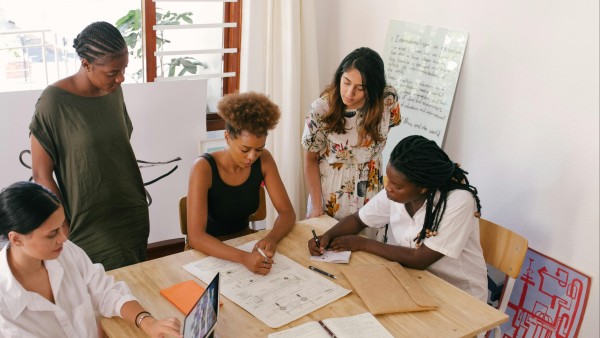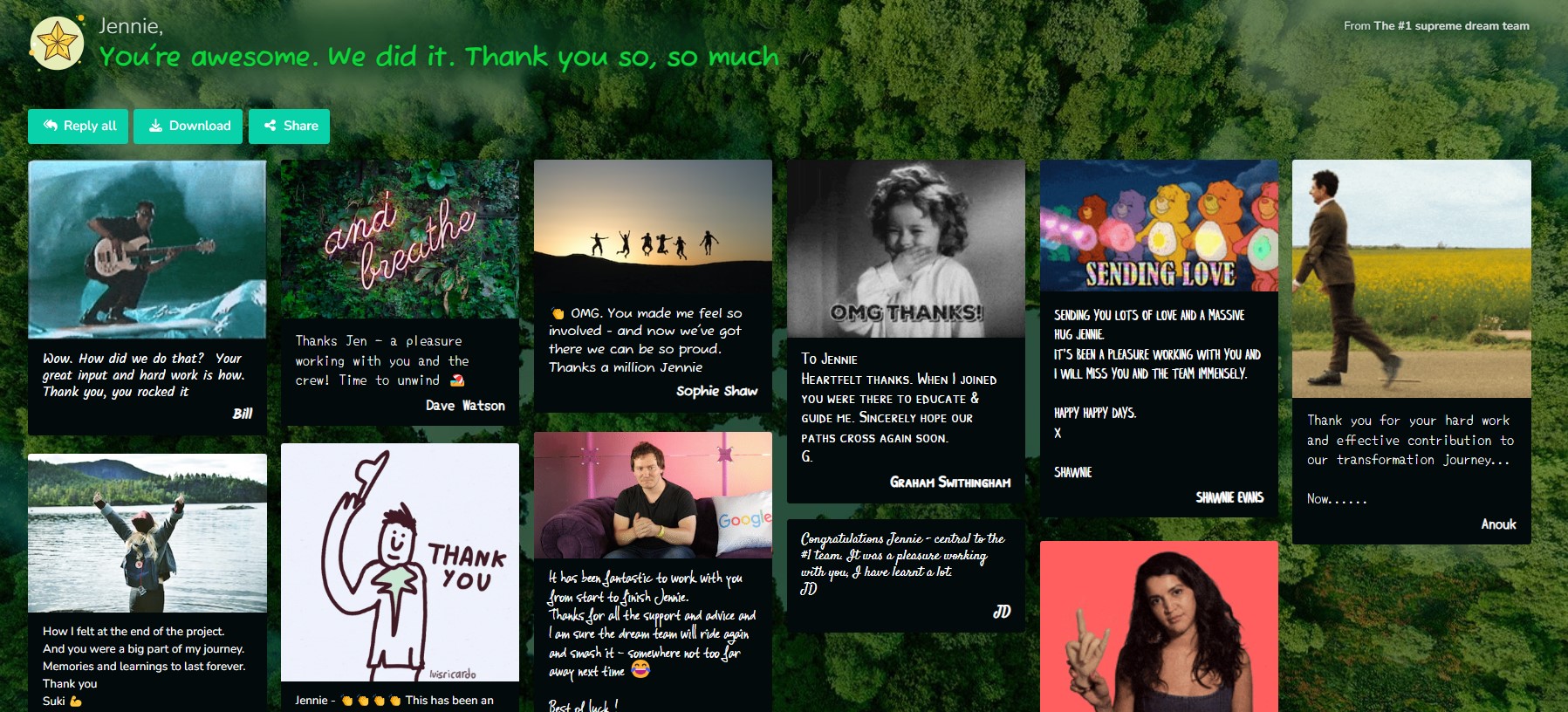Team Development 101: We Share 5 Stages of Forming a Successful Team


We’ve all seen it—some teams click like they’re old friends, while others clash over the smallest thing—did someone take my pen? It all boils down to the fine art of team development, transforming talented individuals into a high-performance team.
Whether you’re a manager or a team member, understanding how to build a successful team is an essential piece of the puzzle. It’s more than trust falls and icebreakers—it’s a structured process that helps people work together.
In this Thankbox article, we’ll explore the ins and outs of team building, the factors to consider when building a team, and the five stages all in-sync teams go through—according to American psychologist Bruce Tuckman.
Ready to build your dream team? Let’s get started!
What is team development?
Team development is all about creating a well-knit group that gels together. It’s a deliberate process of developing a group that can collaborate, communicate, and achieve common goals—perfect for developing strong professional bonds.
At its heart, team building focuses on improving the relationships among your team members. And with 90% of employers believing community is the key to success, encouraging connections fits into a happier workplace.
Why is team development important for your company?
Every top-notch team consists of members with varying work styles, personality traits, and communication methods—it’s what’s crucial for their success! However, teams don’t naturally bond—it takes time, dedication, and strong leadership competencies.
Ensuring that your team can collaborate despite their differences helps prevent conflicts and boost staff morale. Let’s take a look at some other benefits:
Innovation: A strong team sparks creativity and innovation. When people feel comfortable sharing ideas, they’re more likely to come up with out-of-the-box solutions. This open exchange of suggestions encourages diverse perspectives with more well-rounded outcomes.
Increased productivity: As your team develops, members learn to respect and understand each other’s perspectives, leading to smoother collaboration and fewer conflicts. A well-coordinated team tackles projects faster and produces higher-quality work, ultimately boosting productivity.

Improved communication: When team members recognise and appreciate different communication styles, they become much more respectful—avoiding misunderstandings. Clear and open workplace communication channels allow people to communicate freely.
Increased job satisfaction: There’s nothing worse than feeling out of place in the workplace. Employees who feel part of a well-oiled machine experience more job satisfaction. They enjoy a sense of belonging and are more likely to stay motivated.
So, now that we’ve covered why team building is so crucial, let’s dive into the specifics. In our next section, we’ll explore Bruce Tuckman’s stages of team development and how they can steer your team to success.
Boost your team development with Thankbox! Show your team members how much their hard work and collaboration mean to you. Create a Thankbox today and celebrate your awesome team!
What are the 5 stages of team development?
In 1965, Tuckman identified four stages that all teams typically go through as they develop—forming, storming, norming, and performing. Later, in 1977, Tuckman, along with doctoral student Mary Ann Jensen, added a fifth stage called adjourning.
This five-stage model, known as “Tuckman’s Stages,” has since become the go-to framework for understanding and analysing how teams evolve. Let’s dive into each of these stages:
Stage 1: Forming
In this initial phase, team members come together and get to know one another. Forming is characterised by:
Politeness and positivity: Team members are generally polite and optimistic, but also somewhat reserved.
Role exploration: Individuals are uncertain about their roles, responsibilities, and the team’s goals.
Establishing ground rules: The team begins to set expectations, norms, and guidelines for how they’ll operate.
It's totally normal for individuals to feel a bit jittery, so step in and lead the way by making introductions, outlining goals, and setting expectations clearly. To tackle this you can consider organising some social events to help your team bond and feel at ease with one another.

If you need a little inspiration, check out our article, “Game On: 20 Fun Office Games to Lighten the Mood.”
Stage 2: Storming
Here’s where team members begin to collaborate—though they might not gel immediately. The storming stage is often the most challenging as conflicts and power struggles emerge. You’ll most likely notice:
Conflict and tension: Team members assert their opinions, leading to clashes and disagreements— especially if they have different personality types and work styles.
Power struggles: As individuals are still getting to know one another, they may compete for certain roles and recognition, causing unnecessary competition. It’s here where shyer members might feel a little frustrated.
Clarification of goals: Conflicts often arise from differing views on the team’s direction.
To navigate this stage successfully, address conflicts constructively and promote active listening—ensuring every voice is heard. Establish a clear process for conflict resolution and break larger goals into smaller tasks—much more manageable.
When mediating conflicts, try not to take sides. Instead, focus on providing healthy conflict resolution.
Stage 3: Norming
In the norming stage, the team begins to find its rhythm. Teams might toggle between the storming and norming stages, especially if work priorities shift. Don’t worry—these fluctuations are normal. Characteristics of this stage include:
Resolution of conflicts: The initial confusion and conflict from the earlier phases—personality clashes, work styles, etc—begin to give way.
Establishment of norms: The team agrees on norms and procedures, creating a sense of order. They recognise each other’s strengths and understand the roles they play.
Increased cohesion: There is a growing sense of unity and collaboration.
During norming, remember to reinforce positive behaviours, celebrate progress, and continue to build trust. Encouraging collaboration and mutual support helps solidify your team’s foundation.

Now’s your time to collect group feedback and address any challenges. Not all team members feel comfortable in a group setting, so emphasise that your door is always open.
Celebrate progress with Thankbox!
Celebrating progress is a common part of the norming stage, and Thankbox makes it even more special. Use Thankbox to show appreciation and acknowledge your team’s hard work in a fun and unique way.

Create a beautiful e-card bursting with messages, GIFs, photos, and videos. Choose from hundreds of backgrounds or add your own. With Thankbox, anyone, anywhere in the world, can add a personal message instantly. We even have same-day delivery!
One of our standout features is the ability to add video messages. Whether it’s celebrating team progress, thanking an employee, or sharing birthday wishes, video messages turn your words into memorable moments. Check out how they work and see the magic for yourself.
Plus, Thankbox is eco-friendly—no paper, no waste, and we plant a tree for every ten Thankbox cards sold. You can also send digital gift cards and even flowers!
Stage 4: Performing
The performing stage is where the team reaches its peak performance. Team members have established a shared company culture, formed relationships, and streamlined work processes. Key features include:
High productivity: Team members are fully engaged and working towards their goals. Motivation and effectiveness are at an all-time high, with the team reaching peak productivity.
Strong collaboration: There is seamless collaboration and communication among team members. The distinction between individual performance and team success becomes blurred.
Adaptability: The team can handle complex tasks and adapt to changes effectively.
In this stage, the leader’s role shifts to supporting the team’s efforts, taking on the role of mentor. Conflicts can still arise, but it’s your job to keep a close eye on things. Provide resources, remove obstacles, and motivate your team.
Stage 5: Adjourning
The adjourning stage, also known as the mourning stage, occurs when the team has completed its tasks and is disbanding. This stage involves:
Reflection and evaluation: Team members take a step back and reflect (honestly) on their professional journey.
Closure and celebration: Teams review the past weeks or months to celebrate their achievements.
Transition: Team members prepare for new roles and challenges.
To wrap up, organise a meeting where individuals can discuss the entire project, from successes to frustrations. Ask everyone to prepare examples beforehand, highlighting what worked and what didn’t.
Boost your team development with Thankbox! Show your team members how much their hard work and collaboration mean to you. Create a Thankbox today and celebrate your awesome team!
Top tips for boosting team development
Now that we’ve gone through the five stages of team development, here are a few things you can do to build a strong team:

Establish clear team objectives
Work with your fellow managers to craft mission, vision, and purpose statements that guide your team’s efforts.
A mission statement spells out “How?” your company will achieve its goals. The vision statement paints a picture of what you want to accomplish. Meanwhile, the purpose statement answers “Why?” and aligns with your company’s core values.
Select the right people
While it might seem easier to develop a team when everyone is similar, success often requires different approaches and fresh ideas. Diversity encourages innovation and creativity, so bring in people with diverse backgrounds, skill sets, and work styles.
Build team rapport
Minimise conflict by organising team-building activities, personality tests, and knowledge-sharing sessions. Encourage managers to participate and review to build rapport with their team.
Match tasks to skills
Understanding your team better allows for strategic delegation. While it’s best to assign tasks based on strengths, pushing boundaries by giving tasks outside comfort zones can strengthen weak areas. This approach creates a more resilient and well-rounded team.
Kickstart team development with Thankbox
Building high-performing teams isn’t always easy, especially when everyone has different work styles. But with the right leadership and support, you can rally your team around a common goal with fewer road bumps.
Ready to build a stronger, more connected team? Create a Thankbox today and start supporting a culture of collaboration!
Images: Cover | Team sitting at the table | Women at a meeting | Cheerful group of people | Hands together





